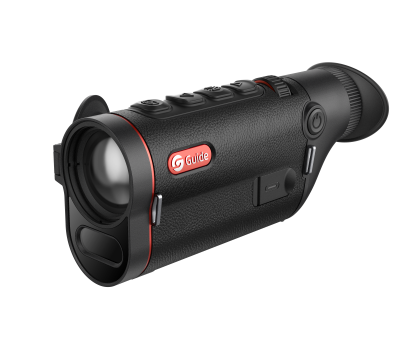
# Handheld Thermal Monocular for Enhanced Night Vision and Surveillance
## Introduction to Handheld Thermal Monoculars
Handheld thermal monoculars have revolutionized night vision technology, offering users unparalleled capabilities in low-light and no-light conditions. These compact devices detect infrared radiation emitted by objects, converting it into visible images that reveal heat signatures invisible to the naked eye.
Unlike traditional night vision devices that rely on ambient light, thermal monoculars work in complete darkness, through smoke, fog, and even light foliage. Their portability makes them ideal for various applications, from wildlife observation to security operations.
## Key Features of Modern Thermal Monoculars
Today’s handheld thermal monoculars boast impressive specifications that enhance their usability:
– High-resolution thermal sensors (typically 320×240 to 640×512)
– Multiple color palettes for different viewing scenarios
– Built-in digital zoom capabilities
– Long battery life (often 6+ hours of continuous use)
– Lightweight and ergonomic designs
– Water and shock-resistant construction
Advanced models may include features like video recording, Wi-Fi connectivity, and GPS tagging for professional applications.
## Applications Across Various Fields
### Security and Law Enforcement
Police and security personnel use thermal monoculars for suspect tracking, perimeter surveillance, and search-and-rescue operations. The ability to detect body heat through obstacles gives officers a significant tactical advantage.
### Wildlife Observation
Researchers and hunters benefit from thermal imaging to study nocturnal animals without disturbing their natural behavior. The technology allows observation without the need for artificial light sources that might scare wildlife.
### Industrial Inspections
Thermal monoculars help technicians identify overheating components, gas leaks, and insulation failures in electrical systems and mechanical equipment, preventing potential hazards.
## Choosing the Right Handheld Thermal Monocular
When selecting a thermal monocular, consider these factors:
– Detection range requirements
– Environmental conditions of use
– Necessary resolution and refresh rate
– Budget constraints
– Additional features like recording or connectivity
Entry-level models provide basic functionality, while professional-grade devices offer superior image quality and advanced features for demanding applications.
## Maintenance and Care Tips
To ensure optimal performance and longevity of your thermal monocular:
– Store in a dry, temperature-controlled environment when not in use
– Clean lenses with appropriate microfiber cloths
– Avoid exposing the device to extreme temperatures
– Regularly check and update firmware if applicable
– Follow manufacturer guidelines for battery care
Proper maintenance will protect your investment and maintain image quality over time.
## The Future of Thermal Imaging Technology
As thermal sensor technology continues to advance, we can expect:
– Higher resolution detectors becoming more affordable
– Improved battery efficiency
– Integration with augmented reality systems
– Smaller, more lightweight designs
– Enhanced image processing algorithms
These developments will make thermal monoculars even more accessible and versatile for both professional and recreational users.
Handheld thermal monoculars represent a significant leap forward in night vision capabilities. Whether for professional surveillance, wildlife observation, or personal security, these devices provide critical visibility when conventional optics fail. As technology progresses, thermal imaging will undoubtedly become an even more essential tool across numerous fields.
Keyword: handheld thermal monocular
Comments are closed